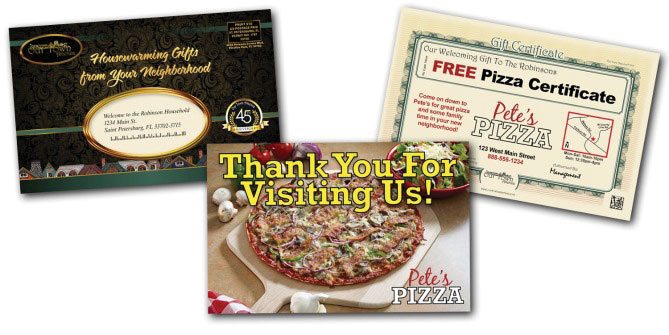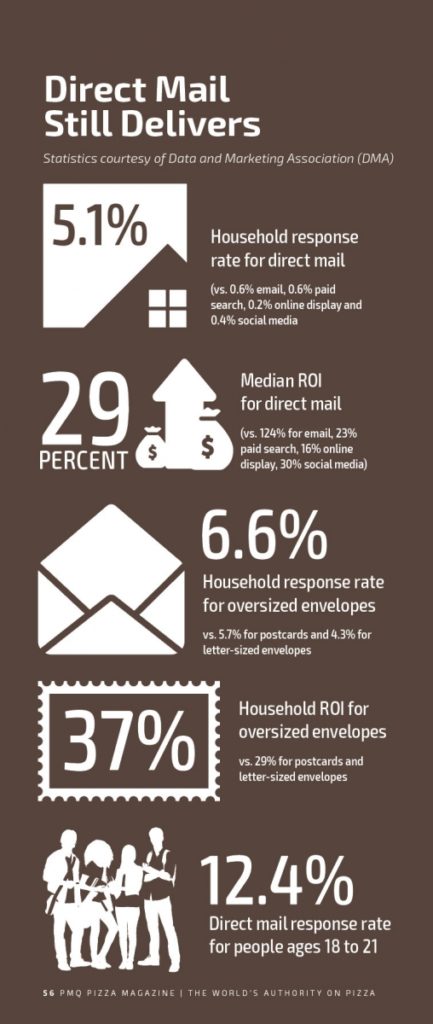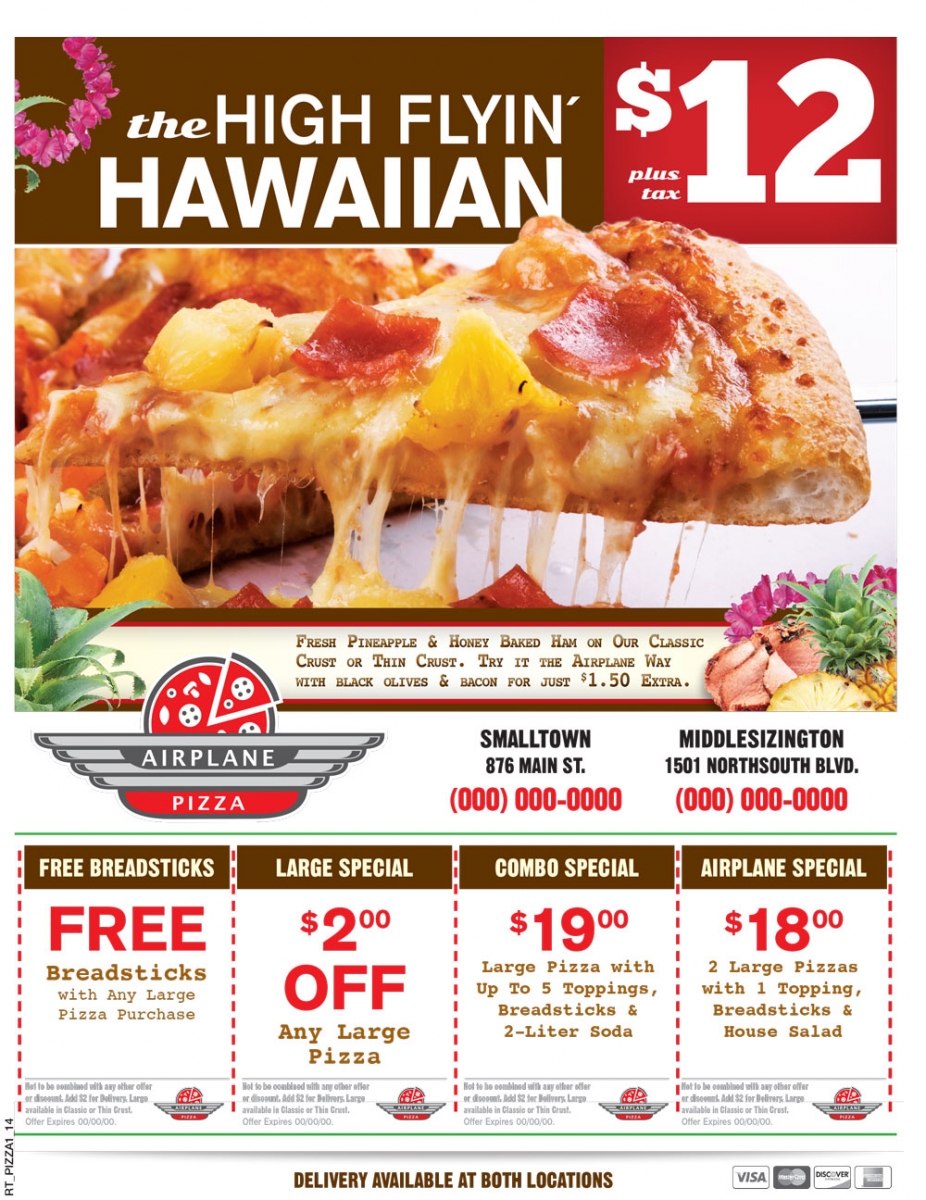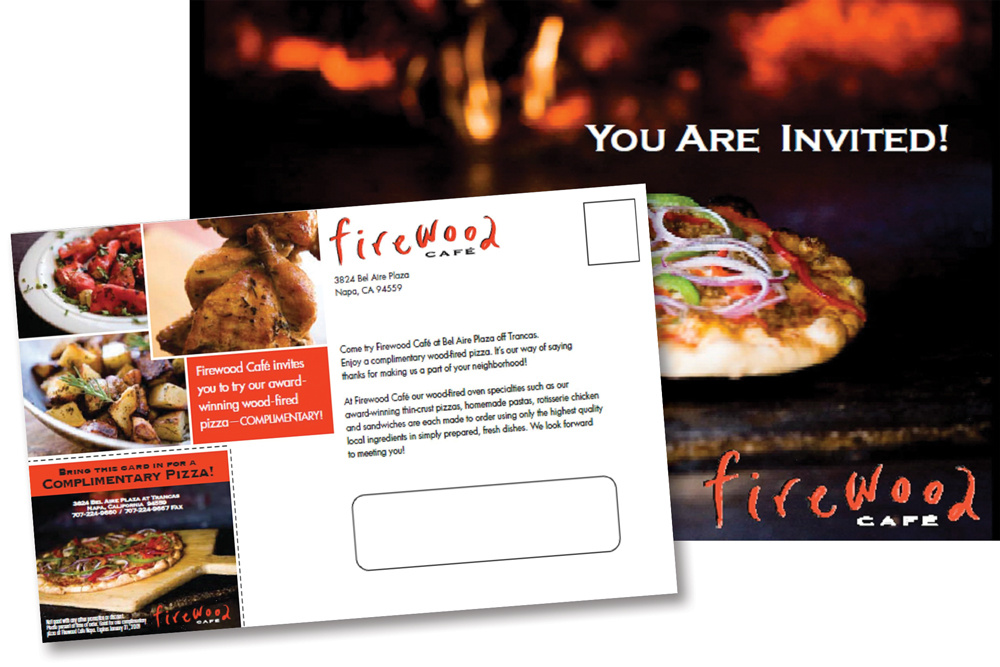In a landscape where digital and mobile advertising have seemingly made past marketing methods look like old-school relics, many experts argue that direct mail is still very much alive today—thriving, in fact. After all, email inboxes have become more clogged with an endless stream of offers, while mailbox loads have considerably lightened. “Consumers get hundreds of emails per day, so direct mail pieces stand out, especially pieces that are esthetically pleasing among your everyday white envelopes,” asserts Brittany Johnson, marketing executive with Our Town America in Clearwater, Florida. “Direct mail will always be relevant.”
But direct mail, like any kind of marketing, has evolved with the times. Today, pizzerias can take advantage of cooperative mailers, sharing the cost with noncompeting businesses, or tie in their efforts with online, social media and mobile marketing tactics. And by targeting the right customers and tracking results, you can ensure maximum ROI for your efforts. Here, direct mail gurus share the best ways to make old-fashioned “snail mail” a winning part of your marketing arsenal.

— Brittany Johnson, Our Town America
Data and Analytics Lead the Way
 Darrell Edwards, CMO of Mspark in Helena, Alabama, shares an interesting stat: According to the Data & Marketing Association (DMA), direct mail response rates were at an all-time high in 2017—higher than competitive media. “There’s a misunderstanding of direct mail’s abilities and relevance in a digital age, while there’s a new generation of marketing and agency professionals who were immersed in digital media from the very start of their careers,” Edwards explains. “They had a lot of success with it and made tremendous strides to evolve it to what it is today. But what makes digital media so impactful is not unlike what makes direct mail impactful: top-notch data and analytics, combined with the ability to precision-target anyone.”
Darrell Edwards, CMO of Mspark in Helena, Alabama, shares an interesting stat: According to the Data & Marketing Association (DMA), direct mail response rates were at an all-time high in 2017—higher than competitive media. “There’s a misunderstanding of direct mail’s abilities and relevance in a digital age, while there’s a new generation of marketing and agency professionals who were immersed in digital media from the very start of their careers,” Edwards explains. “They had a lot of success with it and made tremendous strides to evolve it to what it is today. But what makes digital media so impactful is not unlike what makes direct mail impactful: top-notch data and analytics, combined with the ability to precision-target anyone.”
Rachel Ankersen, marketing research manager for Mspark, adds that many smaller direct mail companies have struggled by failing to leverage data and analytics to help their clients run effective campaigns. Without the capability to precisely target recipients, and without optimized operations to help keep costs low for clients, direct mail efforts often faltered. “This isn’t evidence of a dying print industry; it’s a much-needed symptom of change in an industry that needs to work in harmony with digital media,” Ankersen says. “The direct mail companies that have seen major growth have almost become tech companies, where data and analytics lead the way and everything about operations is technology-focused and geared toward integrating digital with print products, reducing costs for clients, and increasing ROI.”
And as technology continues to evolve, pairing direct mail with a mobile component has also helped direct mail evolve in recent years. “It is no longer just a piece of mail,” Johnson says. “Many times, that single piece of mail is tied into a mobile application, an online offer, and more.”
To demonstrate direct mail’s ongoing relevance, Ankersen shares more 2017 data from the DMA: Average response rates (for a house list) for direct mail were 5.1%, compared to 0.4% for social media. However, regarding cost per acquisition, direct mail is typically higher in cost than digital media. The DMA reported median ROI for direct mail at 29% and social media at 30%. Paid search came in at 23%, and online display at 16%. Therefore, to get the best bang for your buck, increasing response rates and reducing costs remain paramount.
 |
|
Cooperative or shared mailing allows pizzeria owners to divvy up the cost of postage with other noncompeting businesses, leading to increased return on investment. |
Teaming Up
So how can you make direct mail work best for your business? One option is cooperative or shared mailing. Shannon Vann, director of marketing for Mspark, believes it’s the best way for advertisers to win the ROI game. “Advertisers share the cost of postage, which allows them to typically spend 1/3 of the cost of regular direct mail options,” Vann explains. “Shared or cooperative mail also allows advertisers to simultaneously run acquisition and loyalty programs, since we’re saturating households at the carrier route level. Advertisers can reach everyone in a marketplace or select carrier routes, depending on their needs.”
 |
|
As mailbox loads lighten and email inboxes are clogged with a perpetual stream of spam, colorful, attention-getting direct mail pieces can be a viable way to stand out from the crowd |
Johnson notes that there are a few different types of cooperative mailing. For example, a new-mover direct mail marketing campaign can offer several benefits: being a part of a Community Welcome Program that mails to new movers just once; being the only pizzeria in a chosen ZIP code (her company calls this Sponsor Exclusivity); and reaching a new set of customers as new residents move into the area each month. This option also offers the ability to track the program and provide tie-ins with social media, a mobile app and more.
“There are cons to certain types of cooperative mailing, however,” Johnson says. “Certain programs mail to consumers frequently, often resulting in a lower response rate. This type of mailing almost always means that pizzerias are in the mailing alongside other pizzerias, which can also result in a lower response rate.”
Bruce Irving, owner of Smart Pizza Marketing in Boston, notes that while cooperative mailing lowers costs, it may also inadvertently put your stamp of approval on those other businesses featured in your packet, so he advises visiting them and making sure their product and service is something you would recommend. “The last thing you would want to happen is for one of your customers to have a bad experience and feel like you had something to do with it because you referred them,” Irving says. “Better to be safe than sorry!”
Winning Ways
|
MAKING AN IMPACT |
|
As the Data & Marketing Association (DMA) notes, direct mail is a higher-cost marketing tool, so pizzeria owners need to create pieces that deliver higher impact. Based on neuro-marketing research, the DMA recommends the following: Be bold. Humans have an attention span of eight seconds. Marketing that cuts through the clutter with attention-getting graphics and copy are paramount to success. Visuals rule. In fact, the brain processes visuals 60,000 times faster than the time it takes the brain to decode text. Selling your story with pictures and graphics is a must. Keep it simple. Due to cognitive fluency, the brain craves ease and order. Direct mail that creates a simple decision path with limited copy and explanation always tests better. |
Irving also warns that direct mail is more expensive than it was 10 years ago, and possibly less effective, as entities such as Facebook and other forms of social media have shifted consumers’ attention away from mailboxes and more toward online platforms. “Direct mail marketing is still used by many and is still working for them, but you will get better results if you use it wisely,” he says. To make your efforts more effective, he recommends getting specific with your targeting. For example, comb your POS system to find customers who haven’t visited recently, and see where your customers are geographically so you can target that area. “Mass mailing, in my opinion, is a waste of money unless you are brand-new to a market, but a great way to use direct mail is to send customers things for their birthday or to target those who have visited you in the past but haven’t been back in the last 30, 60 or 90 days,” he says. “Using it in these ways is much more effective because it’s for a specific purpose.”
Vann notes that the ideal direct mail tactics depend on what you’re looking to achieve, but the key to success lies in tracking data and analytics. “Making sense of data and knowing whom to target—and when and how—is key in driving up response rates,” she says. “Then, when you have social media and direct mail working together, there’s a cross-pollination of knowledge and other elements that only enhances each medium’s strengths.”
Johnson agrees that tying direct mail to social media marketing enables a better response. For example, her company has developed an online survey for those who receive a new mover package, allowing them to rate the businesses they visited and provide feedback. Then businesses can post those survey comments to their Facebook page, allowing prospective customers to see positive comments about the business.
Irving thinks it’s difficult to entice a customer to follow your business on social media simply by sending them a postcard or flier. Instead, he recommends focusing direct-mail pieces on getting people to order online using a specific coupon code exclusive to that particular mailer. “That way, you can track the results,” he says. “Forget about having them follow you on Instagram or Facebook, because that’s going to be very hard for you to do.”
Ultimately, though, it’s worth exploring your options with a direct mail company and learning about the various marketing methods you can integrate to increase response. Edwards notes that, according to recent research from eTargetMedia, campaigns that integrate direct mail with one or more digital media can experience a 118% lift in response rate. “This makes a lot of sense,” he says. “Take the highest response media and make them all work together. Then it takes the digital marketing geeks working with, and not in opposition to, the data and analytics geeks within a great direct mail company. When these two groups are on the same team working towards the same goals, that’s where the magic happens.”
















